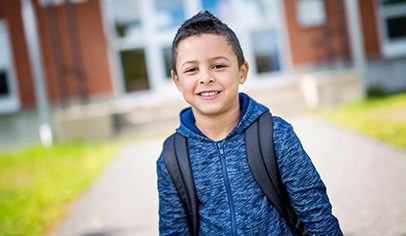Students are going through a lot as they start the 2024-2025 school year. Here’s how teachers and schools can help.
We Need to Talk About Students’ Mental Health
There’s no other way to say it–kids across the country are experiencing a mental health crisis, according to the American Psychological Association. Some of the most common causes include:
- Bullying
- Losing a parent or caregiver
- Gun violence in schools and other current events
- Overexposure to social media
- Stress about grades
Plus, the ups and downs that are an inherent part of growing up.
Let’s Talk Numbers
In 2022, specialist visits for girls ages 12 to 17 doubled for eating disorders, and there was an increase in teenaged patients with anxiety, depression, trauma, stress, and obsessive-compulsive disorders.
In 2023, 20.17% of youth between the ages of 12 and 17 reported suffering a mental health episode in the past year, and 59.8% did not receive any help for their mental health.
EdWeek Research Center also conducted a study on students’ mental health, and found that “concerns about physical appearance” ranked the 3rd most common factor, following school-related stress. The 1st and 2nd causes were “stress related to finishing school/homework” and “grades/test results”, respectively. Additionally, students are scared about the world and their future. The same EdWeek Research Center study found 37% of teens feel anxious about climate change, and a third of them felt afraid for the future, citing a feeling of “impending doom”.
Signs to Look Out For
If you notice any of these signs in a student, it may be time to intervene.
- Persistent sadness that lasts two weeks or more
- Withdrawing from or avoiding social interactions
- Hurting oneself or talking about hurting oneself
- Talking about death or suicide
- Outbursts or extreme irritability
- Out-of-control behavior that can be harmful
- Drastic changes in mood, behavior, or personality
- Changes in eating habits
- Loss of weight
- Frequent headaches or stomachaches
- Difficulty concentrating
- Changes in academic performance
- Avoiding or missing school
Keep in mind that female, LGBTQ+, and/or students who experience racism have an increased risk of mental health issues.
How Teachers Can Help
In addition to learning about strategies used in trauma-informed instruction, teachers can take these steps to help students adjust to the new school year.
Have consistent rules and routines. This year it may take anxious or distracted students longer to learn school rules and routines than you would expect. Taking extra time at the start of the school year to help students internalize rules will help things go more smoothly for the rest of the year.
Teach age-appropriate coping skills. Ask the school counselor to visit your class and teach simple ways that kids can help themselves calm down. You might want to introduce a classroom cool-down corner that students can visit when they feel they are about to lose control or incorporate lessons on social and emotional learning into the curriculum.
Communicate with parents. It’s always been important to keep an eye on how students are doing and to talk with a student’s parents if a child is struggling academically, socially, or emotionally. Let parents know if their child’s behavior changes significantly or they seem disengaged from class. Be aware of the types of services your school counselor provides and be able to explain to parents the process for referring their child to the counselor.
What Teachers of Young Students Should Know
39.2% of children between ages 6 and 16 have experienced a deterioration of mental health in recent years, and 50% of mental health problems developing before age 14. With 1 in 6 children between ages 2 and 8 having a diagnosed mental, behavioral, or developmental disorder, according to the CDC, teachers play a vital role in noticing the signs of a struggling student and ensuring families are made aware to get them the help they need.
How Early Education Teachers Can Help
- Inviting students to meet their teacher and classmates in an outdoor event on the school playground, if it’s safe to do so in your area
- Frequently communicating with parents about how their children are doing; and
- Having a predictable routine and structure to the school day.
What Teachers of Middle and High School Students Should Know
With their greater needs for social interaction with peers, many students in middle school and high school struggled with loneliness while learning remotely. Some students reported worrying more about their school performance. Many found themselves spending most of their waking hours online, between school and personal internet use, feeling isolated even if family members were home with them.
How Middle and High School Teachers Can Help
Teachers at the middle school and high school levels can help support their students by watching for changes in behavior and signs of anxiety and depression and understanding their school’s process for referrals to the school counselor.
In addition, teachers can help students by fostering a sense of belonging and connection at school. The CDC’s recommendations for doing this include reinforcing positive behavior and using techniques that are not punitive.




